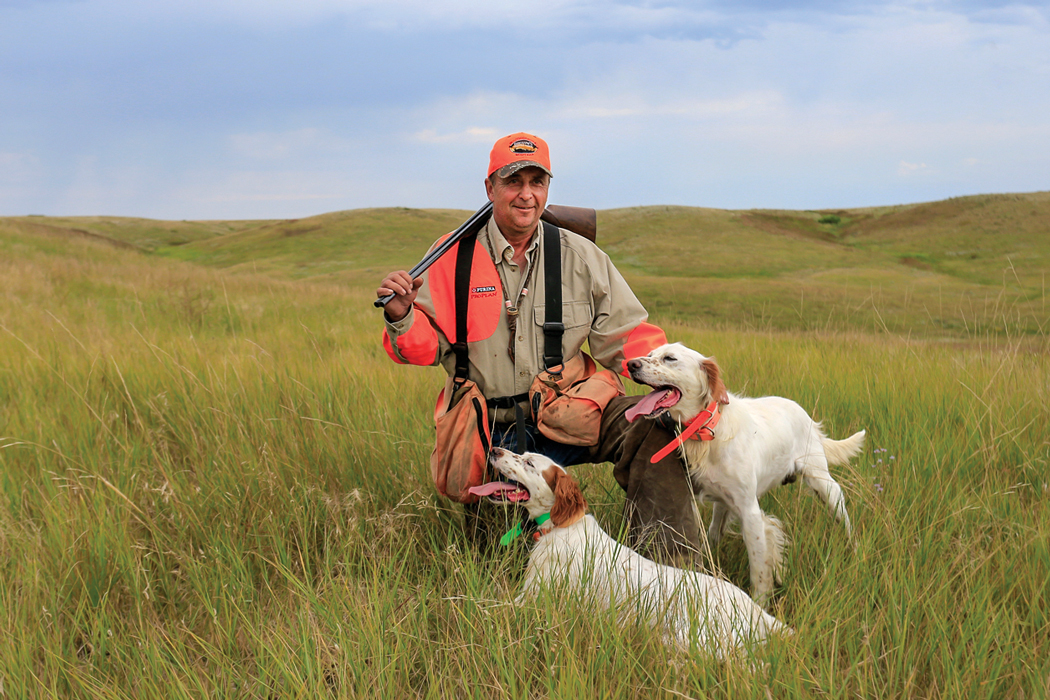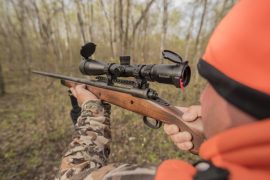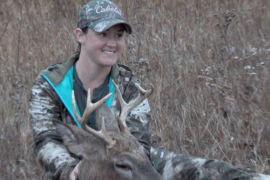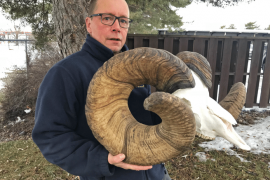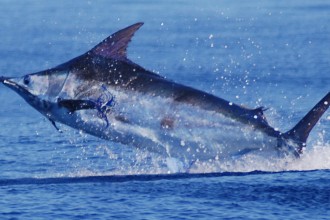
By Steve Grossman
There’s no such thing as the “right” range at which a pointing dog should hunt. Yet I often hear hunters ask and argue about the topic. There’s no one-size-fits-all answer, because hunting sharp-tailed grouse on the prairies in South Dakota is vastly different than hunting ruffed grouse in the aspens in northern Minnesota. I use this comparison because those are the two places I spend my falls hunting and guiding. While I don’t know the best, most-effective range for your pointing dog and the way you hunt, I can help narrow your options.
I believe that if a dog has good manners around game, the range at which the dog hunts is not the most important factor in upland hunting success. But that doesn’t mean there aren’t a number of variables to consider in addition to terrain/cover and bird species. Are you the type of hunter who can ramble through cover for six or eight hours a day, or do you prefer shorter, more leisurely hunts? Can you tolerate a dog that spends much of the day as a speck on the horizon? At the other extreme: How do you feel about a pointing dog that hunts at flushing-breed range? The answers to these questions go to your individual preferences, and before you pick your next pup, you need to have a clear picture of what you’re looking for.
Make the Right Choice
First, let me elaborate on the importance of picking the right dog. This matters more than anything, because when a dog is wired a certain way, there is just so much that training can do to influence it.
Let’s say you’re positive you want an English setter. What should matter more than anything is making sure you’re buying a pup from parents or a bloodline that represents your preferred hunting style. If you want a close-working dog, for example, don’t buy one out of heavy-duty field-trial stock. On the other hand, if you want a dog that really eats up the prairie, then look for a pup out of a line that is bred for that.
Don’t automatically assume that all dogs of a certain breed will hunt one way and that those of another breed will hunt a different way. I don’t label a breed as working “close” or “far.” Focus on the individual dog. Among setters, for example, if you want a close-working dog, you could go with one out of Ryman or Hemlock lines. On the other hand, I have a client with a German shorthair that runs as big as a lot of pointers and has won some of the most prestigious championships. The owner hunts behind him on horseback.
While I do want my dog to ‘check in’ every so often, that doesn’t mean running all the way back to me.
In some cases you might be better off buying a started dog from someone who understands your needs and can match the dog to your hunting style and training capabilities. Every pup in a given litter will not act identically. Even though a certain line of dogs might be generally classified as “close working” or “wide ranging” or “ideal for foot hunters,” it is impossible to guarantee the hunting style of individual pups. Buying a started dog eliminates the guesswork. I have a client whose situation is a great example of fitting the dog to the person via a started dog. He is in his 70s and has bad knees. His grouse hunting is limited to walking logging trails, and he told me that what he wanted more than anything was a nice little setter. I recommended an 18-month-old dog that I’d trained and spent enough time with to know that she was a close, thorough worker. That dog might not have been a good fit for a guy who wanted to really put on the miles, but for this guy she was the perfect solution.
I believe…

